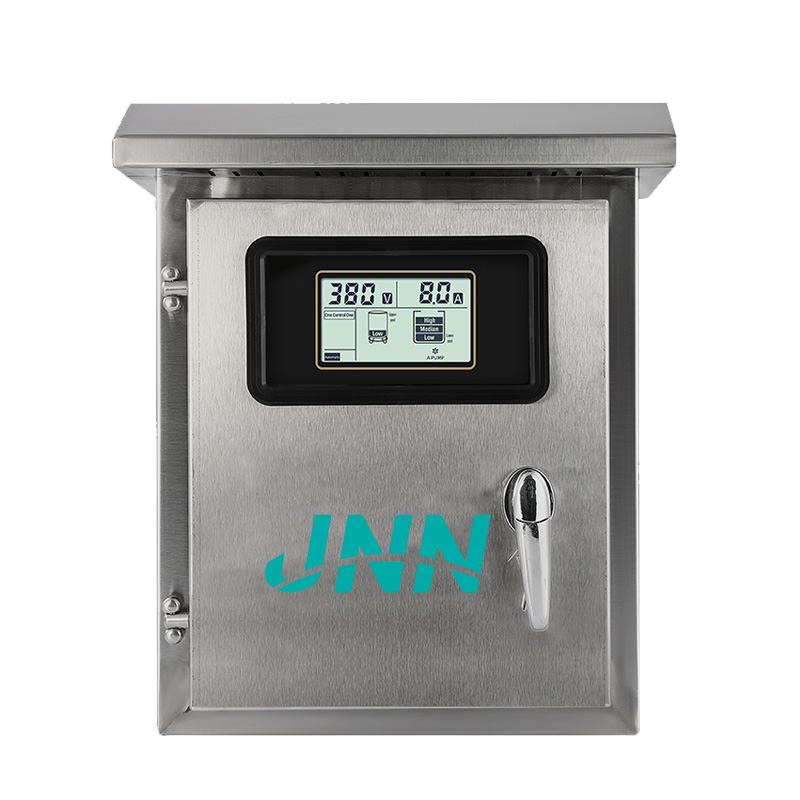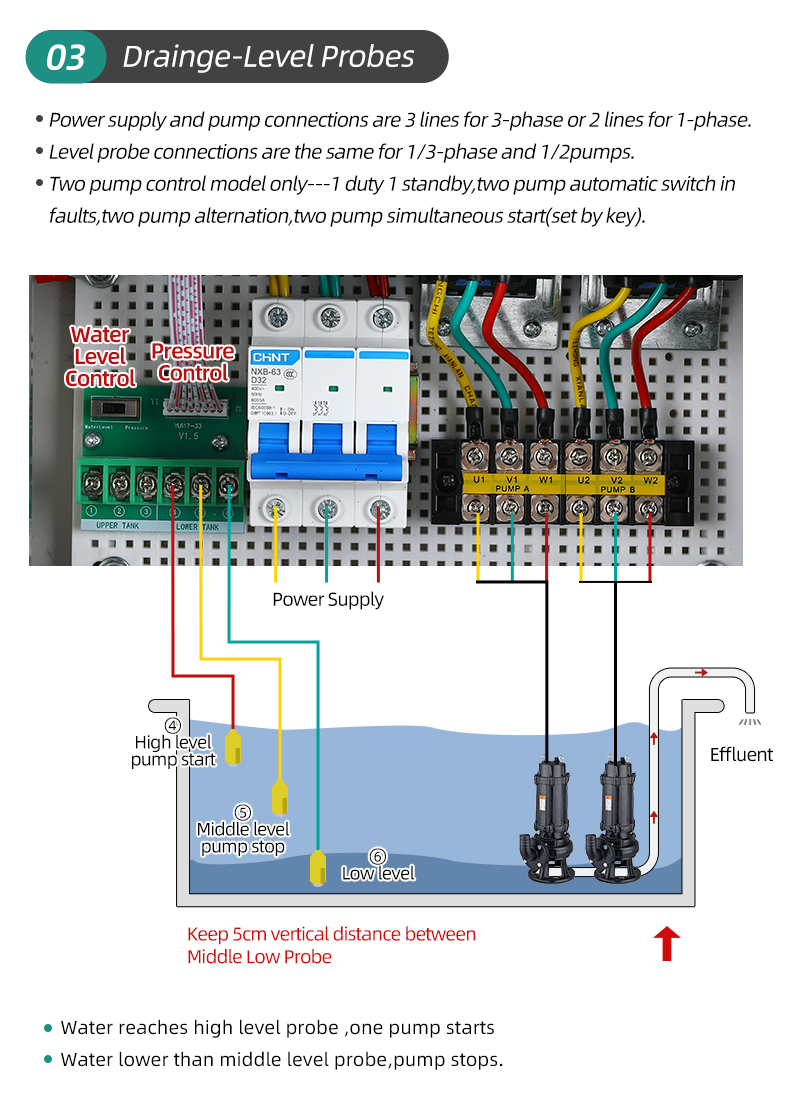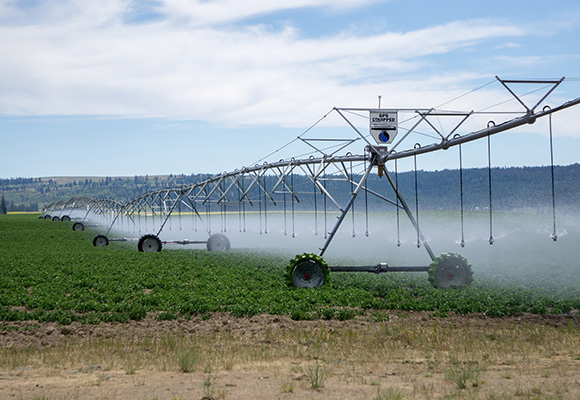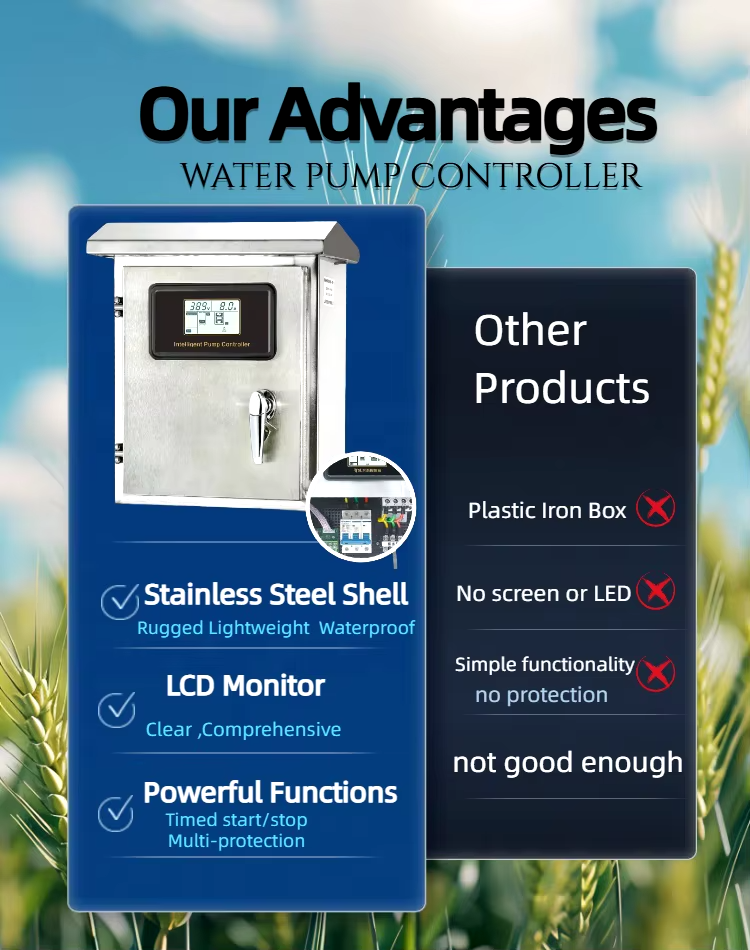In the past, managing water systems relied heavily on manual monitoring and human decisions. From irrigation in vast agricultural fields to water supply in multi-floor commercial buildings, water pumps had to be turned on or off based on someone’s judgment—often through trial and error, or worst, guesswork. This approach not only wastes valuable time and energy but also introduces room for costly errors.
Automatic water pump controllers have changed the game completely. These intelligent devices are designed to simplify water system management, reduce the risk of system failure, and enhance operational efficiency. Whether you're managing a remote farm, a manufacturing plant, or a high-rise building's plumbing system, automated pump control offers reliability that manual systems simply can't compete with.
But how exactly do they work? And why are so many modern systems across the U.S. making the switch? Let's dive in.
Table of Contents
What Does an Automatic Water Pump Controller Actually Do?
Is Manual Pump Operation Costing You More Than You Think?
How Does Automation Improve Water Efficiency and Sustainability?
Can It Handle Harsh or Remote Conditions?
How Easy Is It to Integrate One Into Your Existing System?
What Does an Automatic Water Pump Controller Actually Do?
An automatic water pump controller is essentially a smart brain for your water pumping system. It continuously monitors inputs—such as water levels in a tank or reservoir—and automatically turns the pump on or off depending on preset thresholds.
For example, imagine a rainwater harvesting system. When the underground storage tank runs low, the controller activates the pump to draw in water. Once the tank is full, the controller shuts off the pump to prevent overflow. Simple, efficient, and hands-free.
Here's a closer look at what it manages:
Start/Stop control based on water level, pressure, or time
Dry run protection to prevent damage to the pump when water is unavailable
Overload and voltage protection to prevent system damage during electrical fluctuations
Alarm notifications (in advanced models) for remote or on-site alerts
Depending on your setup, the controller can work with float switches, pressure sensors, ultrasonic sensors, or a combination of methods for better precision. Many modern controllers even offer digital displays, adjustable delay settings, and remote access options—making them suitable for both basic and advanced use cases.
In industrial or high-demand environments, such control systems can support multi-pump operations, automatically alternating pumps to balance usage and extend equipment life.

Is Manual Pump Operation Costing You More Than You Think?
Manual pump systems seem affordable—until you tally the hidden costs. These aren't just theoretical concerns; they're real issues that U.S. businesses deal with every day.
Let's look at the downsides of manual systems:
Labor-intensive operations
Manual pumps require regular human monitoring. That means someone has to physically check tank levels or pressure gauges and switch pumps on or off accordingly. Over time, this leads to high labor costs and potential delays.
Risk of human error
Forgetting to turn off a pump can result in overflow, flooding, or pump burnout. On the flip side, not switching on a pump in time could disrupt operations, delay production, or even damage connected equipment.
Unscheduled downtime
A failed pump due to dry run, overheating, or short-circuiting can bring entire operations to a halt. This isn't just a nuisance—it's a significant financial risk, especially when running 24/7 systems.
Energy waste
Without optimization, pumps may run longer than necessary or operate during peak electricity pricing periods, driving up your energy bill.
In contrast, an automatic water pump controller drastically reduces or eliminates these risks. It ensures that your system is operating only when needed, and under safe conditions. It's not just smart—it's cost-efficient.
Case in point:
A mid-sized food processing plant in Iowa installed an automatic controller to manage their washdown water system. Within 6 months, they reported:
28% reduction in pump-related maintenance
22% savings on energy costs
Zero downtime due to pump failure
These kinds of numbers are becoming increasingly common across industries, from agriculture to logistics.

How Does Automation Improve Water Efficiency and Sustainability?
Water conservation is no longer just a“nice to have”—it's an operational necessity. As climate uncertainty and local water restrictions increase, especially in states like California, Arizona, and parts of Texas, sustainable water management is essential.
So how exactly does an automatic water pump control box contribute to water efficiency?
1. Precision-Based Water Control
Unlike manual systems that rely on scheduled or estimated operations, automatic controllers respond to real-time conditions. This eliminates overfilling or excessive pumping, reducing water wastage significantly.
2. Leak Detection and Alerts
Some advanced systems come with leak monitoring capabilities. If abnormal usage is detected, the system can sound an alert or shut off water supply entirely—helping operators respond before the problem escalates.
3. Smart Irrigation Integration
In agriculture, integrating a pump controller with soil moisture sensors or weather data systems can enable smart irrigation, delivering water only when and where it's needed. This results in healthier crops and lower utility bills.
4. Lower Carbon Footprint
By avoiding unnecessary operation and ensuring optimal load conditions, pump controllers help reduce energy consumption—contributing to sustainability goals and reducing greenhouse gas emissions.
Whether you're aiming for green certification or just looking to save money on utilities, this technology helps align operational performance with environmental responsibility.
Can It Handle Harsh or Remote Conditions?
One of the standout strengths of modern automatic water pump controllers is their ability to thrive in difficult environments—places where humans can't always be present or where conditions are too harsh for frequent maintenance.
Consider these real-world conditions:
Construction sites with frequent dust, debris, and unpredictable power
Farms or ranches miles away from the nearest technician
Wastewater treatment plants with high humidity, corrosion risks, and volatile flow patterns
Mountain cabins or remote lodges dependent on water from wells or streams
In these cases, automation is not just convenient—it's essential.
Key features for harsh environments include:
Waterproof and dust-resistant enclosures
Auto-restart functionality after power interruptions
Voltage surge protection for lightning-prone or unstable grids
Bypass/manual override modes for emergency intervention
Additionally, models with remote monitoring allow operators to check water levels, pump status, and alerts via smartphone or cloud dashboard—no matter where they are. This is especially valuable in rural or large-scale operations, where sending personnel onsite daily is not feasible.

How Easy Is It to Integrate One Into Your Existing System?
One of the most common hesitations about switching to automation is the fear that it will require a complete system overhaul. The good news? Most modern automatic water well pump controllers are designed to integrate easily with existing pump and piping systems.
Integration Benefits:
Universal compatibility: Works with submersible pumps, centrifugal pumps, and pressure booster systems
Simple wiring and mounting: Most units come pre-configured with easy-to-follow installation guides
Adaptability: Can be configured for single-phase or three-phase power
Low-voltage signal support: For integration with building automation systems (BAS)
For larger operations, some advanced models support multi-pump coordination, enabling:
Alternating operation to reduce wear
Load sharing between pumps
Automatic fallback in case one pump fails
Even for smaller-scale setups like home-based irrigation or well-water supply, compact and affordable models are available that still deliver strong performance and protective features.

Final Thoughts: Why Now Is the Time to Upgrade
Today's automatic water pump controllers aren't just a high-tech gimmick—they're the new standard for reliability, efficiency, and control. In an increasingly connected world where downtime is costly and resources must be used wisely, automation provides a clear advantage.
Whether you're upgrading from outdated equipment or planning a new system, choosing the right controller can deliver:
Peace of mind from system failures
Lower energy and water bills
Reduced maintenance and repair costs
Smarter, data-driven operations
And if you're looking for a brand that offers durable, field-tested solutions for demanding environments, JNN has you covered. JNN's automatic water pump controllers are built for real-world use—offering both plug-and-play simplicity and advanced features where needed.
Take the guesswork out of water management. Let automation do the heavy lifting.















